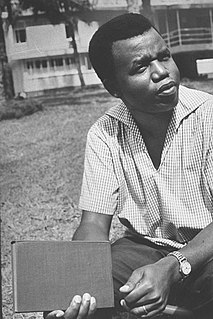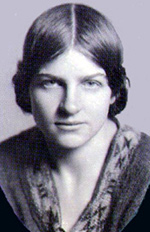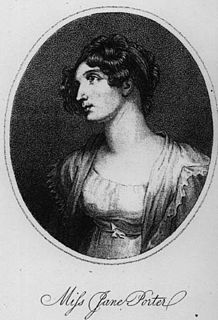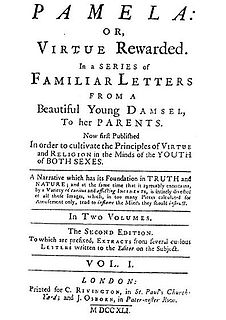
Dracula is a novel by Bram Stoker, published in 1897. As an epistolary novel, the narrative is related through letters, diary entries, and newspaper articles. It has no single protagonist, but opens with solicitor Jonathan Harker taking a business trip to stay at the castle of a Transylvanian nobleman, Count Dracula. Harker escapes the castle after discovering that Dracula is a vampire, and the Count moves to England and plagues the seaside town of Whitby. A small group, led by Abraham Van Helsing, hunt Dracula and, in the end, kill him.

Uncle Tom's Cabin; or, Life Among the Lowly is an anti-slavery novel by American author Harriet Beecher Stowe. Published in two volumes in 1852, the novel had a profound effect on attitudes toward African Americans and slavery in the U.S., and is said to have "helped lay the groundwork for the [American] Civil War".

Willa Sibert Cather was an American writer known for her novels of life on the Great Plains, including O Pioneers!, The Song of the Lark, and My Ántonia. In 1923, she was awarded the Pulitzer Prize for One of Ours, a novel set during World War I.
This article contains information about the literary events and publications of 1858.

Chinua Achebe was a Nigerian novelist, poet, and critic who is regarded as the dominant figure of modern African literature. His first novel and magnum opus, Things Fall Apart (1958), occupies a pivotal place in African literature and remains the most widely studied, translated, and read African novel. Along with Things Fall Apart, his No Longer at Ease (1960) and Arrow of God (1964) complete the so-called "African Trilogy"; later novels include A Man of the People (1966) and Anthills of the Savannah (1987). He is often referred to as the "father of African literature", although he vigorously rejected the characterization.

Naomi Mary Margaret Mitchison, Baroness Mitchison was a Scottish novelist and poet. Often called a doyenne of Scottish literature, she wrote over 90 books of historical and science fiction, travel writing and autobiography. Her husband Dick Mitchison's life peerage in 1964 entitled her to call herself Lady Mitchison, but she never did. Her 1931 work, The Corn King and the Spring Queen, is seen by some as the prime 20th-century historical novel.
Martin Roger Seymour-Smith was a British poet, literary critic, and biographer.

Jane Porter was an English historical novelist, dramatist and literary figure. Her bestselling novels, Thaddeus of Warsaw (1803) and The Scottish Chiefs (1810) are seen as among the earliest historical novels in a modern style and among the first to become bestsellers. They were abridged and remained popular among children well into the twentieth century.

Sir Pelham Grenville Wodehouse, was a prolific English author, humorist and scriptwriter. After being educated at Dulwich College, to which he remained devoted all his life, he was employed by a bank, but disliked the work and wrote magazine pieces in his spare time. In 1902 he published his first novel, The Pothunters, set at the fictional public school of St. Austin's; his early stories continued the school theme. He also used the school setting in his short story collections, which started in 1903 with the publication of Tales of St. Austin's.

Homoeroticism is sexual attraction between members of the same sex, either male–male or female–female. The concept differs from the concept of homosexuality: it refers specifically to the desire itself, which can be temporary, whereas "homosexuality" implies a more permanent state of identity or sexual orientation. It is a much older concept than the 19th-century idea of homosexuality, and is depicted or manifested throughout the history of the visual arts and literature. It can also be found in performative forms; from theatre to the theatricality of uniformed movements. According to the Oxford English Dictionary, it is "pertaining to or characterized by a tendency for erotic emotions to be centered on a person of the same sex; or pertaining to a homo-erotic person."

The Gothic double is a literary motif which refers to the divided personality of a character. Closely linked to the Doppelgänger, a term which first appeared in the 1796 novel Siebenkas by Johann Paul Richter, the double figure emerged in Gothic literature in the late 18th century due to a resurgence of interest in mythology and folklore which explored notions of duality, such as the fetch in Irish folklore which refers to a double figure of a family member, often signifying an impending death.

Pamela; or, Virtue Rewarded is an epistolary novel first published in 1740 by English writer Samuel Richardson. Considered one of the first true English novels, it serves as Richardson's version of conduct literature about marriage. Pamela tells the story of a fifteen-year-old maidservant named Pamela Andrews, whose employer, Mr. B, a wealthy landowner, makes unwanted and inappropriate advances towards her after the death of his mother. Pamela strives to reconcile her strong religious training with her desire for the approval of her employer in a series of letters and, later in the novel, journal entries all addressed to her impoverished parents. After various unsuccessful attempts at seduction, a series of sexual assaults, and an extended period of kidnapping, the rakish Mr. B eventually reforms and makes Pamela a sincere proposal of marriage. In the novel's second part Pamela marries Mr. B and tries to acclimatise to her new position in upper-class society. The full title, Pamela; or, Virtue Rewarded, makes plain Richardson's moral purpose. A best-seller of its time, Pamela was widely read but was also criticised for its perceived licentiousness and disregard for class barriers. Furthermore, Pamela was an early commentary on domestic violence and brought into question the dynamic line between male aggression and a contemporary view of love. Moreover, Pamela, despite the controversies, was able to shed light on social issues that transcended the novel for the time such as gender roles, early false-imprisonment, and class barriers present in the eighteenth century. The action of the novel is told through letters and journal entries from Pamela to her parents. Richardson highlights a theme of naivety, illustrated through the eyes of Pamela. Richardson paints Pamela herself as innocent and meek to further contribute to the theme of her being short-sighted to emphasize the ideas of childhood innocence and naivety.
The Auden Group or the Auden Generation is a group of British and Irish writers active in the 1930s that included W. H. Auden, Louis MacNeice, Cecil Day-Lewis, Stephen Spender, Christopher Isherwood, and sometimes Edward Upward and Rex Warner. They were sometimes called simply the Thirties poets.

Margaret Moore Kennedy was an English novelist and playwright. Her most successful work, as a novel and as a play, was The Constant Nymph. She was a productive writer and several of her works were filmed. Three of her novels were reprinted in 2011.

Bungay Castle is a gothic novel by Elizabeth Bonhôte, first published in 1797. It is set loosely in the thirteenth century around the First Barons' War, and follows the fortunes of the fictional De Morney family at the real Bungay Castle in Suffolk. Bonhôte's husband purchased the ruins of this castle in 1791. The novel was published by William Lane's Minerva Press. The core themes of the novel are conservative and pro-monarchic.
A novelist is an author or writer of novels, though often novelists also write in other genres of both fiction and non-fiction. Some novelists are professional novelists, thus make a living writing novels and other fiction, while others aspire to support themselves in this way or write as an avocation. Most novelists struggle to have their debut novel published, but once published they often continue to be published, although very few become literary celebrities, thus gaining prestige or a considerable income from their work.
Ranjana Ash was an Indian-born writer, literary critic, academic and activist, who was a leading advocate of south Asian and African writing. She moved in the 1950s to England, where she married American-born writer and broadcaster Bill Ash.

Lucy Carmichael is a 1951 romantic drama novel by the British writer Margaret Kennedy. It was her tenth published novel. It was well-received by critics but did not repeat the success of her earlier hits The Constant Nymph and Escape Me Never. It was a Literary Guild choice in America. In 2011 it was reissued by Faber and Faber.

The Feast is a 1949 novel by the British writer Margaret Kennedy. It is a modern reworking of the seven deadly sins. Her ninth novel, it was her first in more than a decade. It was a Literary Guild choice in America.














